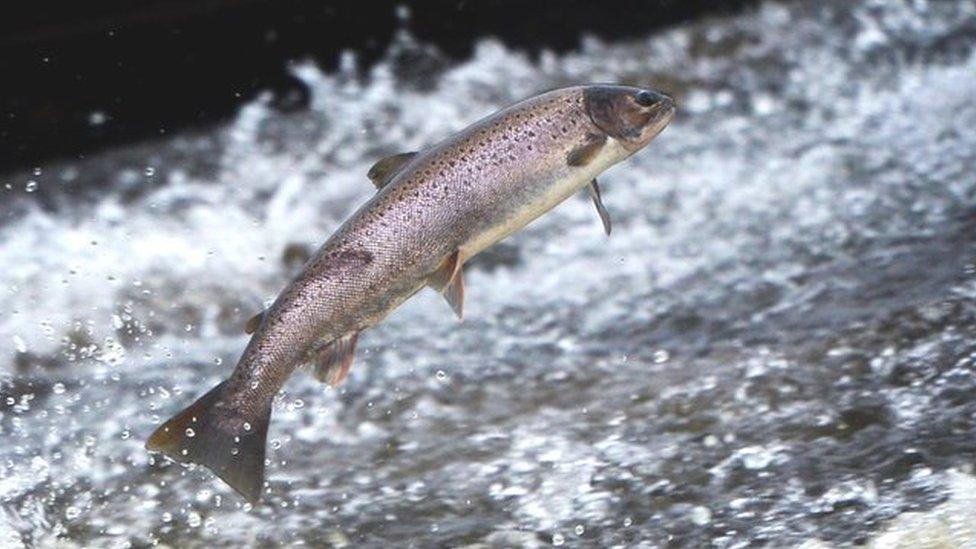Scotland's wild salmon stocks 'at lowest ever level'
- Published
- comments

Wild salmon catches in Scotland are at their lowest level since records began, government figures have revealed.
Fisheries Management Scotland said new data highlighted that stocks of the fish are at "crisis point".
The total reported catch through rod fishing was 37,196 for 2018, which was just 67% of the previous five-year average total.
The vast majority of these, 93%, were caught and then released back into the water.
The alliance of salmon fishery boards said catches of the fish are at their lowest levels since 1952.
'Approaching crisis point'
The Scottish government has set out a number of salmon conservation measures, external in recent years.
Environment secretary Roseanna Cunningham said: "The decline in wild salmon numbers is of great concern, and I'm determined that we safeguard the future of this important species."
But Alan Wells, chief executive of Fisheries Management Scotland, said more needed to be done.
He said: "Salmon catches in Scotland have reached the lowest levels ever recorded.
"Figures for 2018, taken together with those of recent years, confirm this iconic species is now approaching crisis point. Some of the factors impacting on wild salmon stocks may be beyond human control.
"But the regulatory authorities now have a historic opportunity to do everything in their power to safeguard the species in those areas where they can make a difference."

In the past campaigners have claimed fish farms are to blame for wild salmon deaths as a result of sea lice originating from the farms.
And a Scottish Parliament inquiry has recommended new farms be positioned away from established migratory routes for wild salmon.
The annual economic value of Scottish salmon passed the £1bn mark for the first time last year and the 226 active farms support 10,000 jobs, many of which are in rural communities.

The Scottish Environmental Protection Agency has previously said one in five salmon farms failed to meet environmental standards
Andrew Graham-Stewart, director of Salmon and Trout Conservation Scotland, said: "Continuing low salmon numbers underline the vital importance of mitigating those man-made negative impacts, which are within our grasp to tackle, as a matter of urgency.
"One of the most critical factors is the impact of open-net salmon farms, in particular the release into the wider environment of vast numbers of deadly parasitic sea lice, on wild salmon numbers."
The salmon farming industry has insisted it is working hard to find solutions to the problem of sea lice, and is making progress in rearing so-called cleaner fish which feed off the lice, avoiding the need for chemicals.
The Scottish government will publish the official wild salmon population data later.
Environment secretary Roseanna Cunningham said the fall in the salmon catch was down to a range of complex factors, "many of which are outwith our control, including the unprecedented water shortages Scotland experienced last summer".
She added: "We have identified 12 groups of high level pressures on the species, and we're working closely with key partners to address these. Last year, for example, we committed £500,000 to fund research so we can better understand the problem and mitigate against it.
"In addition, we are providing around £5m a year to the Water Environment Fund to allow Sepa to remove barriers to fish migration in rivers around Scotland."